From the Chicago Reader (January 26, 2001). — J.R.
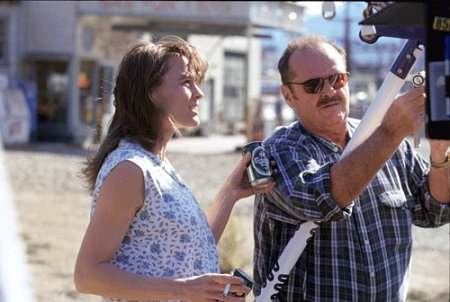
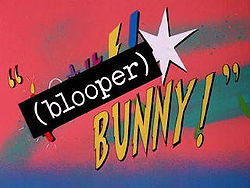

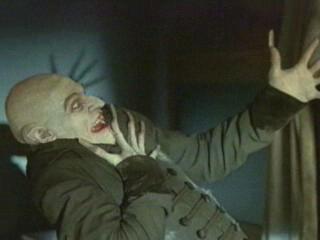
The Pledge
***
Directed by Sean Penn
Written by Jerzy Kromolowski and Mary Olson-Kromolowski
With Jack Nicholson, Patricia Clarkson, Benicio Del Toro, Dale Dickey, Aaron Eckhart, Helen Mirren, Tom Noonan, Robin Wright Penn, Vanessa Redgrave, Mickey Rourke, and Sam Shepard.
Blooper Bunny
***
Directed by Greg Ford and Terry Lennon
Written by Ronnie Scheib, Ford, and Lennon
With Bugs Bunny, Daffy Duck, Elmer Fudd, and Yosemite Sam.
The Wedding Planner
**
Directed by Adam Shankman
Written by Pamela Falk and Michael Ellis
With Jennifer Lopez, Matthew McConaughey, Bridgette Wilson- Sampras, Justin Chambers, and Judy Greer.
Shadow of the Vampire
*
Directed by E. Elias Merhige
Written by Steven Katz
With Willem Dafoe, John Malkovich, Catherine McCormack, Eddie Izzard, Cary Elwes, and Udo Kier.
I can’t say that The Pledge, The Wedding Planner, Blooper Bunny, and Shadow of the Vampire have much in common, apart from the fact that they’re showing in Chicago this week. Yet all four do, to different degrees, feed off other movies. Frankly, that’s what I like most about The Wedding Planner — a romantic comedy starring Jennifer Lopez and Matthew McConaughey that aspires to and achieves the goofiness of a studio musical of the early 50s. Read more
From Video Times (February 1986). — J.R.
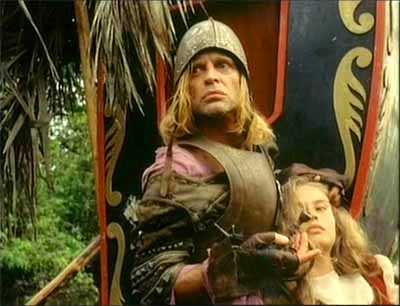
AGUIRRE, WRATH OF GOD
(1972), C, Director: Werner Herzog. With Klaus Kinski, Roy Guerra, Del Negro, and Helena Rojo. 90 min. Subtitled. Continentai, $39.95. ****
Among contemporary movies that aspire to create the resonance of myth, there are few more compelling than this 1972 masterpiece. Directed by German filmmaker Werner Herzog, the film stars Klaus Kinski in the title role. At once a 16th century Peruvian adventure story about the legend of El Dorado and a somewhat indirect parable about modern imperialism, Aguirre, Wrath of God can be regarded as one of the key influences on Francis Coppola’s 1979 Apocalypse Now. The fact that Herzog himself launched a treacherous journey through the backwaters of Peru in order to film his tale helped to popularize the notion of the director as mad Faustian conquistador. When Herzog himself attempted to surpass Aguirre a decade later with Fitzcarraldo, another insane, “historic” journey up the Amazon, the result was only a pale dilution of the original.
The film opens with a printed title that perfectly establishes the aura of legend: “After the conquest and sack of the Incan empire by Spain, the Indians invented the legend of El Dorado, a land of gold, located in the swamps of the Amazon tributaries. Read more
From the Chicago Reader (November 27, 1992). I couldn’t (and wouldn’t) argue that this treat is necessarily Coppola’s best movie, for reasons given below, but I wonder if it might actually be his most pleasurable, at least on a moment-by-moment (and shot-by-shot) basis. The Blu-Ray only adds to and enhances the richness. — J.R.
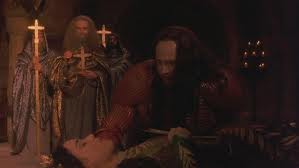
BRAM STOKER’S DRACULA
*** (A must-see)
Directed by Francis Ford Coppola
Written by James V. Hart
With Gary Oldman, Winona Ryder, Sadie Frost, Tom Waits, Anthony Hopkins, Keanu Reeves, Richard E. Grant, Cary Elwes, and Bill Campbell.

Geographical spread accounts for some of the major differences between the film culture in this country and the various film cultures in Europe. While overseas the principal film-production centers and intellectual centers are usually located in the same cities — Paris, Rome, London, Madrid, Lisbon, Stockholm, Budapest, Prague — most of the United States stretches between our main film-production center, Hollywood and environs, and our main intellectual center, New York. The practical consequence is that our left hand hasn’t the faintest idea what our right hand is doing.
So much for the geographical split. What might be called the institutional gap is even worse. I’m referring to the profound lack of communication between the film industry (including most movie reviewers) and academic film studies (including intellectuals in adjacent or related fields). Read more







